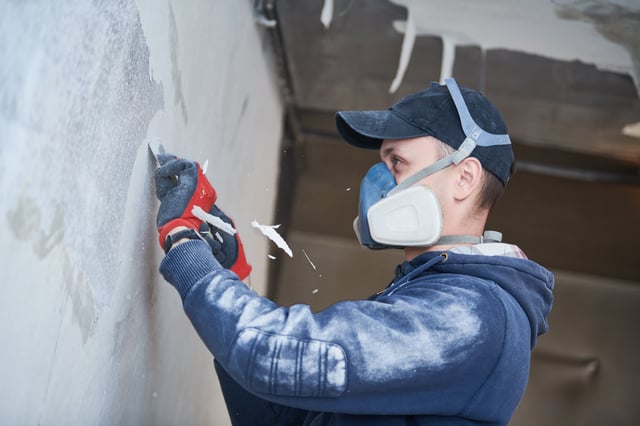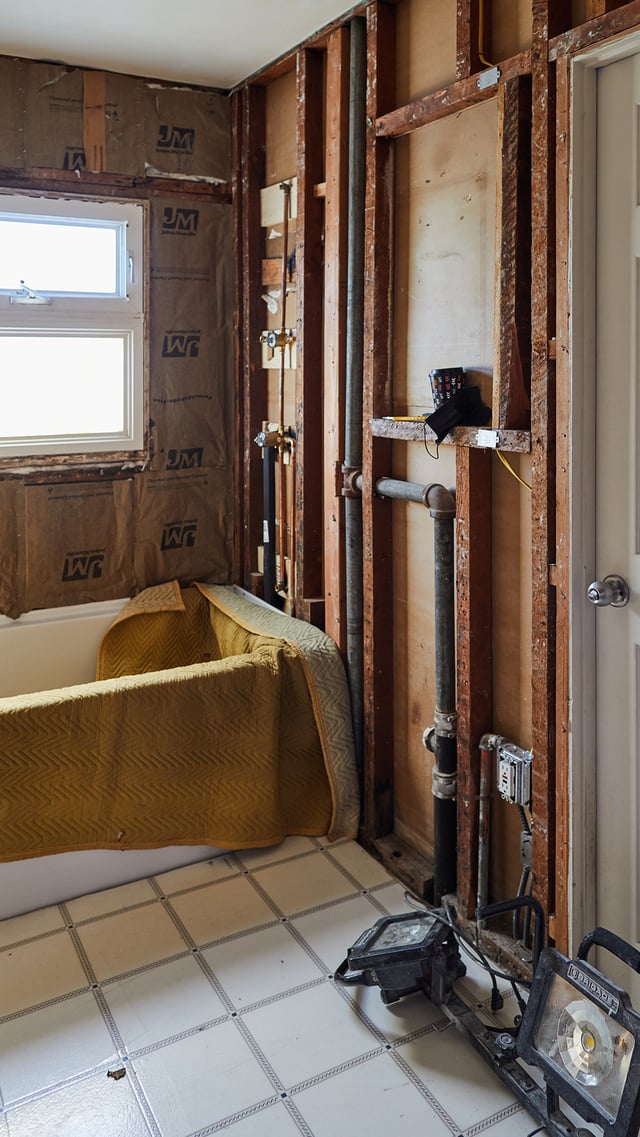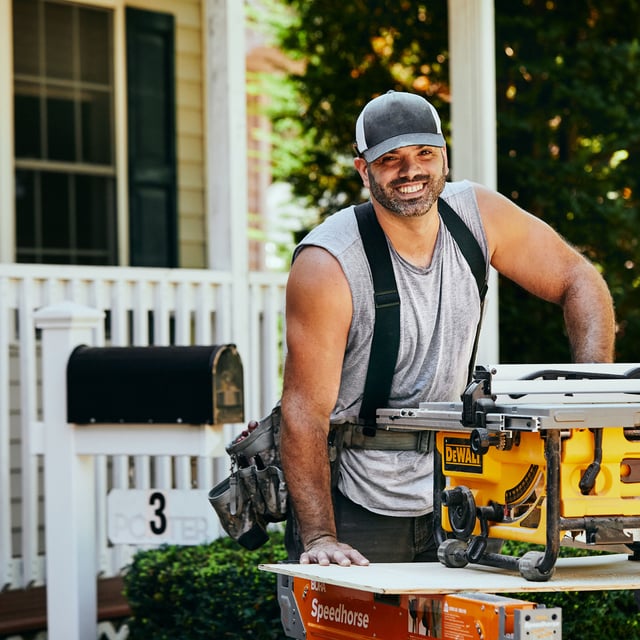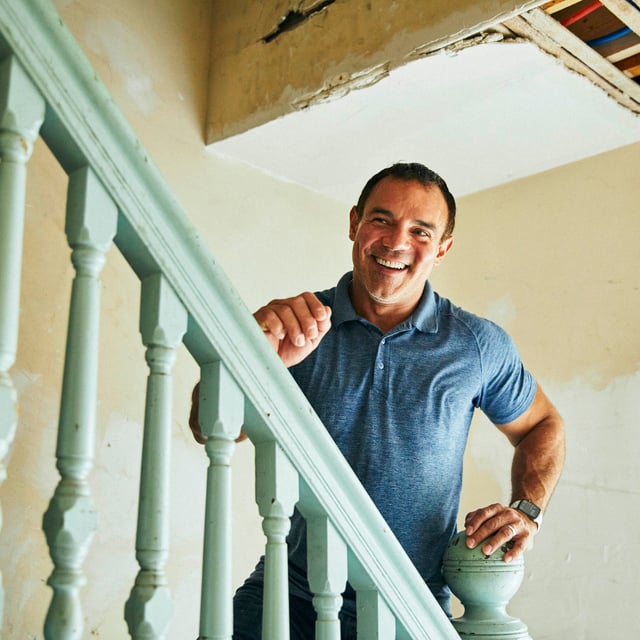
Contractors
Half Bathroom to Full Conversion: Costs, Permits & Designs
08.02.2025


In This Article
Have you ever imagined waking up to find your home damaged by fire? The emotional and financial toll of such an event can be overwhelming. It's crucial to take prompt yet thoughtful steps toward recovery to ensure a smoother renovation process.
In this fire-damaged home renovation guide, we'll navigate through essential areas like safety, insurance, cleanup, and rebuilding. Let's dive into restoring your home to its former glory with confidence and care.
Experiencing a house fire is undoubtedly distressing, but understanding the extent of the damage is a critical first step. Properly assessing the situation will help guide your decisions in the fire restoration process. With a clear picture of the damage, you can confidently move forward on the path to recovery.
After experiencing a fire, prioritizing your safety is crucial before entering your damaged home. Patience is key—wait until the fire officials declare it safe to enter your property. This clearance ensures that any remaining hazards, like unstable structures or lingering smoke, are not putting you at risk.
Once it's safe to enter, equipping yourself with protective gear is essential. Wearing masks and gloves can shield you from exposure to harmful debris and toxic substances. These simple measures not only protect your health but also prepare you for the challenging task of fire damage cleanup.
When it's safe to enter your home, the first step is to carefully inspect the damage. Look for structural issues like cracks or weakened walls, as well as soot and smoke residue that may have settled throughout the house. These observations will help you understand the extent of the damage caused by the fire.
Next, it's time to assess what can be saved and what is beyond repair. Identify the areas and items that are salvageable—perhaps some furniture or sections of the home that were less affected. Recognizing total losses versus what can be restored guides you in making informed decisions about moving forward with the renovation process.
After completing your initial inspection, it’s wise to bring in an expert to assess the situation thoroughly. Hiring a structural engineer or a restoration professional ensures that every aspect of your home’s safety and repair needs is evaluated by someone with the right expertise. These professionals will provide an in-depth analysis of structural damage, identify potential hidden issues, and offer guidance on the repairs necessary to restore your home.
By having a professional evaluation, you'll gain peace of mind knowing that your renovation plans are based on reliable and accurate information. This step not only helps prioritize essential repairs but also strengthens your case when working with insurance companies to cover the necessary restoration work.
After a fire, navigating the insurance process is a crucial step toward recovery. Contacting your insurance company promptly can help streamline your insurance claims after a house fire. Understanding how to work with your provider ensures you receive the support you need to rebuild and restore your home effectively.
Initiating an insurance claim is essential for financing the restoration of your home after a fire. Start by contacting your insurance provider to report the damage and open the claims process. They will guide you through the necessary steps and inform you about any deadlines or specific requirements.
Gathering documentation is a key part of this process. Take clear photos and videos of the damaged areas, and collect any receipts or records of expenses related to the fire. This evidence will support your claim and help your insurance company understand the extent of the losses, ensuring you receive fair compensation.
Understanding what your homeowner’s insurance covers after a fire is crucial to planning your next steps. Typically, homeowner’s insurance policies cover the repair or replacement of structures and personal property damaged by fire. It's important to review your policy to know exactly what's included.
In addition to covering the damage, many policies also provide for temporary living expenses if your home becomes uninhabitable. This means you may receive financial support for accommodations while your home is being repaired. Clarifying these details with your insurer will help you manage expectations and resources during the rebuilding process.
When working with an insurance adjuster, effective communication is key to ensuring you receive fair compensation for your losses. Start by presenting all the detailed documentation you have gathered, such as photos, videos, and receipts, to clearly illustrate the extent of the damage. This information helps the adjuster assess your claim accurately.
Negotiating with the adjuster may be necessary to ensure you are adequately compensated. Be prepared to discuss the details and value of your property and any repair estimates you have received. Staying informed and assertive during these conversations can make a big difference in reaching an agreement that covers your restoration needs.
In certain situations, hiring a public adjuster can be a valuable step in managing your insurance claim after a fire. If you find the process overwhelming or feel the initial compensation offer from your insurer is insufficient, a public adjuster can serve as your advocate. These professionals are experienced in negotiating with insurance companies and can help ensure you receive a fair settlement.
Consider involving a public adjuster if the claim is particularly complex or if you disagree with the assessment provided by the insurance adjuster. Their expertise can streamline the process and often results in a more favorable outcome, giving you peace of mind during a challenging time.
Once the insurance process is underway, focusing on cleaning up is the next critical step. Effective cleanup not only helps to restore your home’s appearance but also addresses health and safety concerns posed by soot and water damage. Working with professionals will make this process smoother and more efficient, ensuring that your home becomes a safe and healthy environment once again.
Enlisting the help of fire damage restoration professionals can make a significant difference in your cleanup efforts. Certified restoration companies have the expertise and equipment necessary to address the extensive damage caused by fire, soot, and smoke. Their knowledge ensures that your home is cleaned thoroughly and properly, reducing health risks and preventing further deterioration.
By using professional services, you also save time and reduce stress, as these experts efficiently handle the complex cleanup process. Additionally, they can provide guidance on salvaging valuable belongings and restoring your home to its original condition as much as possible. Trusting professionals allows you to focus on other important aspects of your recovery journey.
After a fire, safely removing debris and damaged materials is essential for both health and renovation purposes. Proper disposal of these items, especially those containing hazardous materials like chemicals or asbestos, should be handled carefully. Following local regulations for disposal ensures that you’re protecting yourself and the environment.
In addition to debris removal, addressing soot and smoke residue is a must. Cleaning affected walls, floors, and ceilings helps eliminate odors and prevents further damage to surfaces. Using specialized cleaning agents and techniques can significantly improve the results and make your home feel welcoming again.
Often overlooked, water damage from firefighting efforts can lead to significant issues if not properly addressed. After the fire is extinguished, assess areas for water damage and begin drying out the property immediately. Use fans, pumps, and wet/dry vacuums as needed to remove excess water.
Preventing mold and mildew is crucial for maintaining a healthy living environment. Consider hiring professionals to ensure thorough drying and dehumidifying of affected areas. Their expertise can help identify hard-to-reach spaces where moisture might linger, ensuring a complete and safe restoration.
Improving indoor air quality is a vital step in restoring your home after a fire. Air scrubbers and dehumidifiers can be used to filter out harmful particles and reduce moisture levels in the air. This equipment helps clear the air of soot and smoke particles, making it safer for you and your family.
Effective ventilation plays a key role in restoring air quality. Open windows and doors, when possible, to circulate fresh air. In cases where natural ventilation is insufficient, mechanical ventilation systems can expedite the process, helping to renew the air within your home and creating a healthier living environment.
Once cleanup is underway, it's time to turn your attention to planning the renovation of your home. Creating a comprehensive plan will help prioritize essential repairs and set a realistic timeline for rebuilding. With a clear roadmap in hand, you can more effectively coordinate with contractors and manage your budget throughout the fire restoration process.
Creating a renovation plan is your first step towards rebuilding your home. Start by prioritizing essential repairs, focusing on critical areas such as structural integrity and roofing to ensure your home is safe and secure. Once key repairs are outlined, establish a realistic timeline for rebuilding, considering the availability of materials and contractors.
Budgeting is a crucial part of any renovation project. Begin by calculating the costs involved, including labor, materials, and any additional expenses that may arise. Leveraging insurance payouts can provide significant financial support, and exploring other financing options can help bridge any gaps to ensure your renovation is completed successfully.
Understanding permits and local regulations is essential to avoid any legal setbacks during your renovation. Familiarize yourself with fire-related building codes and permit requirements in your area. This knowledge helps ensure compliance and protects you from potential fines or delays, smoothing your path to a successful renovation.
With a solid plan and budget in place, you can now focus on the exciting phase of rebuilding and renovating your home. This stage is all about putting the pieces back together, stronger and better than before. Careful selection of contractors and materials will play a significant role in restoring your home to its former glory while enhancing its safety and functionality.
Selecting the right contractor is crucial for a successful restoration. Look for licensed, experienced contractors who specialize in fire restoration to ensure quality results. Ask for recommendations, check reviews, and verify their credentials to make an informed choice. During the hiring process, ask questions about their experience with similar projects, their timeline estimates, and how they handle potential challenges.
When it comes to repairing structural damage, ensuring that all work complies with current building codes is essential. Rebuilding the walls, floors, and roofs requires attention to detail and compliance to guarantee safety and durability. Additionally, consider reinforcing your home with fire-resistant materials to prevent future fire incidents and enhance overall resilience.
Replacing damaged electrical and plumbing systems is an important aspect of making your home safe and functional again. Upgrade these systems to meet the latest safety standards, improving efficiency and reducing risk. Engaging skilled professionals ensures that these crucial systems are installed correctly and will serve your home well into the future.
Restoring your home's interiors brings back its comfort and personalization. This involves cleaning and repainting walls, replacing flooring, and restoring cabinetry to give the home its familiar feel. Choosing finishes and materials that are both durable and aesthetically pleasing will enhance your living space's appearance and functionality.
Effectively addressing smoke and odor damage is vital for a healthy and pleasant living environment. Professional deodorization techniques can eliminate lingering smells, making your home fresh and welcoming. It may also be necessary to replace insulation and other porous materials that have absorbed odors to fully refresh your home's air quality.
As you rebuild your home, incorporating fire prevention strategies is a smart and proactive step. By adopting fire-resistant materials and updating your home's safety systems, you can significantly reduce the risk of future fires. Taking these measures ensures that your home is not only restored, but safer and better prepared for any potential threats.
Incorporating fire-resistant materials into your home renovation can greatly enhance its safety. Consider fireproof options for roofing, siding, and insulation, each designed to withstand high temperatures and slow the spread of flames. These materials not only protect your home but can also reduce potential damage in the event of a future fire.
Upgrading your home's fire safety systems is essential for early detection and response. Ensure that smoke alarms are installed in key areas and are regularly tested for functionality. Adding sprinkler systems and keeping fire extinguishers easily accessible can provide additional layers of protection, helping to safeguard both your property and loved ones.
Having a well-thought-out fire escape plan is a critical component of home safety. Conduct family emergency drills to ensure everyone knows the evacuation routes and meeting points. Regular practice can help your family react quickly and safely in the event of a fire, minimizing risks and ensuring a coordinated response.
Going through a house fire can be a deeply emotional experience, and addressing the psychological impact is just as important as the physical rebuilding.
It's essential to acknowledge the emotional toll a fire takes and to seek support when needed. Whether through counseling, support groups, or friends and family, talking about your feelings and experiences can be incredibly healing. Understanding you're not alone in this journey can help alleviate stress and promote emotional well-being.
Fortunately, many resources are available to assist those affected by a fire. Local community programs, grants, and nonprofit organizations often provide valuable support services and financial assistance. Reaching out to these resources can ease the burden and provide much-needed aid as you work toward recovery.
Engaging your family in the renovation process can transform a challenging situation into a positive, collaborative experience. By involving everyone in planning and decision-making, you foster a sense of teamwork and shared purpose. This collective effort can strengthen family bonds and create a renewed sense of hope and connection in your rebuilt home.
Recovering and rebuilding after a house fire involves several essential steps, from assessing damage and handling insurance claims to cleaning up and planning renovations. Approaching these tasks methodically ensures a smoother process and helps restore your home efficiently. Always seek professional support when needed, as experts in fire damage cleanup can offer valuable assistance. Finally, take action by exploring contractor options or contacting local fire restoration specialists to start your journey of rebuilding confidently.

Written by Block Renovation
How long does it take to renovate a fire-damaged home?
Can I live in my home during the restoration process?
What is typically covered by insurance after a house fire?
How can I remove smoke odor from my home?
Are there government grants for rebuilding after a fire?

Renovate confidently with Block
Easily compare quotes from top quality contractors, and get peace of mind with warranty & price protections.
Thousands of homeowners have renovated with Block

4.5 Stars (100+)

4.7 Stars (100+)

4.5 Stars (75+)

Contractors
Half Bathroom to Full Conversion: Costs, Permits & Designs
08.02.2025

Process
Gutting a Bathroom: What It Entails, Costs & Timeline
07.15.2025

Remodeling
Does Homeowners Insurance Cover Renovations?
05.22.2025

Remodeling
What’s the Difference Between a Home Renovation and a Remodel?
05.22.2025

Remodeling
How to Renovate in Brooklyn
05.22.2025
Renovate confidently